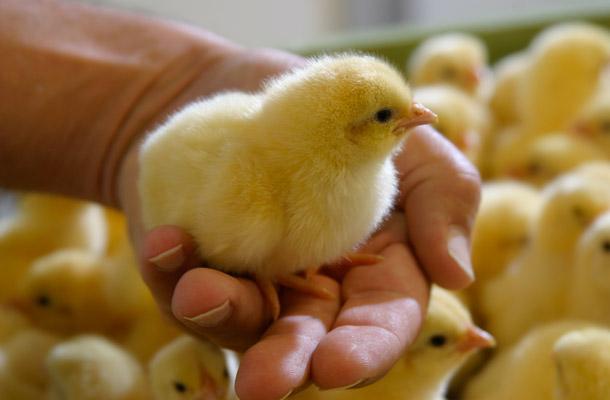Incubation at high altitudes
Tags: Incubation | Whitepaper
, 27 August 2010

The effect of high altitude on hatchability and chick quality depends largely on the altitude at which the hatching eggs are produced - and how the hatchery manager adjusts the incubation programme. Barometric pressure declines with ¬altitude, as does the partial pressure of oxygen and absolute humidity. Because molecules move more freely at lower density, the overall diffusion of oxygen, carbon dioxide and water molecules through the pores of the egg’s shell is increased. Moreover, fresh ventilating air at altitude is usually colder and drier than at sea level.
Oxygen availability
The reduced availability of oxygen in a given volume of air is partially compensated both by the increased rate of diffusion of oxygen through the shell, and by the embryo’s higher capacity for binding oxygen to blood haemoglobin (Dragon et. al, 1999). Oxygen injection to artificially raise the oxygen level to 23 – 25 % may improve hatchability, but it is an expensive practice, that increases fire risk in the hatchery.
Water loss
It is reasonable to assume that the increased rate of diffusion at altitude will produce increased moisture loss from the eggs. However, evidence suggests that breeder flocks may adapt to altitude by producing eggs with a lower effective pore area, similar to the adaptation of wild birds to altitude. This compensates for increased diffusion, such that water vapour loss through the egg shell at any altitude remains the same as at sea level (Rahn et. al, 1977). Relative humidity set points for setter and hatcher should be chosen with care.
Three ‘altitude’ scenarios
1 Eggs produced at sea level: hatchery at altitude (1000 - 2000 meters)
Of the three scenarios, this is the least desirable because it will definitely result in reduced hatchability. Eggs produced at sea level have a relatively large effective pore area and will therefore lose more water at higher altitudes. To compensate, setters and hatchers should be operated at a higher relative humidity. This is best achieved by pre-conditioning the inlet air to a relative humidity of 75 per cent, with a temperature of 24 - 28°C (optimum). At the same time, increase the ventilation rate from normal for sea level, to accommodate the reduced oxygen levels.
2 Eggs produced at same altitude as hatchery (1000 - 2000 meters)
In general this will give good results. Ventilation rates should be higher than normal for sea level, such that the embryo is provided with sufficient oxygen. During humid external conditions, increase ventilation, as humidity reduces oxygen levels in the air still further. This higher ventilation rate may cause reduced humidity in the setters and hatchers. To avoid constant humidifying, humidity set points should be lowered. The higher than optimal weight loss (eg. 13 – 14 %) that results is preferred in this case.
3 Eggs produced at altitude: hatchery at sea level
Generally, this will give good results. The set points for relative humidity need to be reduced to achieve optimum weight loss, as the eggs have a reduced effective pore area.
Advice
- Fine-tune relative humidity set points by weighing trays of eggs before setting and again at transfer at 18 - 18.5 days. Exact set points for relative humidity are dependent on a.o. altitude and egg shell conductivity (age flock, nutrition, genetics). Optimum weight loss for good hatchability and chick quality is indicated in the table below.
- Judge the size of the air cell as an indicator of weight loss.
- Be aware of signs that indicate insufficient weight loss and/or a shortage of oxygen during an egg break-out. If too many wet, fully developed embryo’s that fail to pip are observed, reduce set points for relative humidity and/or increase ventilation rate.
- Ensure that humidity and CO2 sensors are calibrated for altitude, or alternatively find the correct set point to be used.
Written by Gerd de Lange
Senior Poultry Specialist
I welcome your feedback on this article - and if you require any additional information, please don't hesitate to contact me.